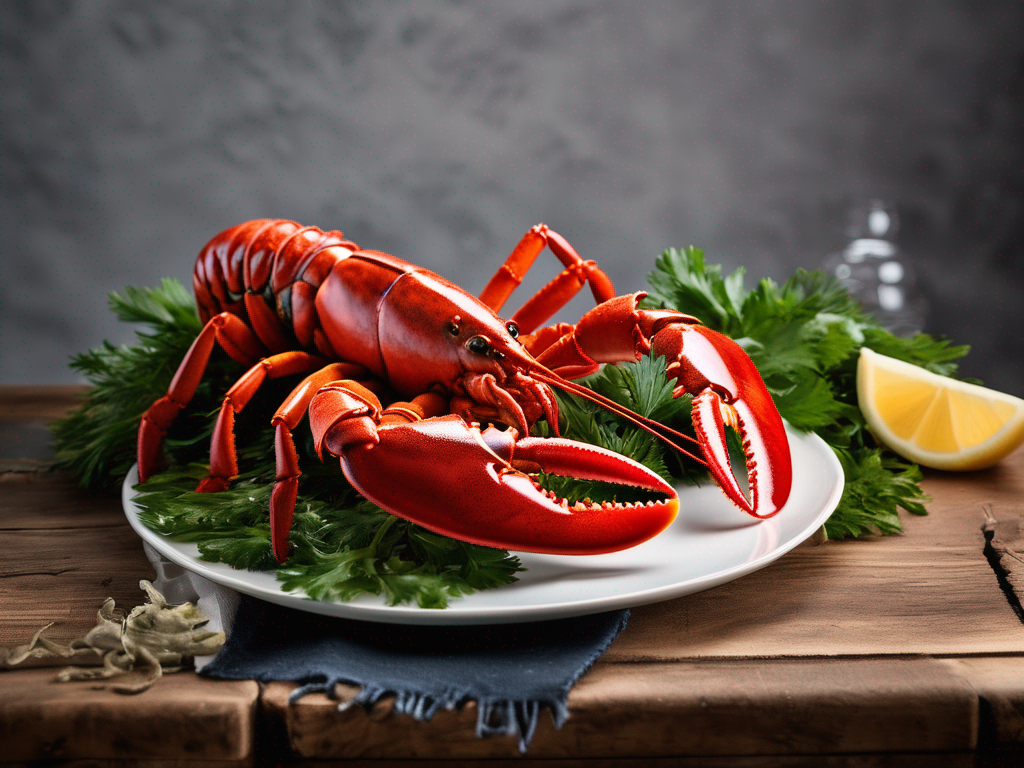
Is Your Live Lobster Past its Prime? Signs of Freshness to Look For
Get Your Free Food Safety Cheat Sheet
30 most common foods with instant answers. Print it and stick it on your fridge—completely free!
Is Your Live Lobster Past its Prime? Signs of Freshness to Look For
When it comes to enjoying a delicious lobster meal, freshness is key. Whether you've purchased live lobsters from the seafood market or caught them yourself, it's essential to ensure that the lobsters are still fresh before cooking and consuming them. In this post, we will discuss how you can tell if your live lobster is no longer fresh and provide tips on ensuring food safety when handling these crustaceans. (Lobster live)
How Long Do Live Lobsters Stay Fresh?
Live lobsters are highly perishable creatures, and their freshness can deteriorate rapidly if not stored and handled properly. Here are some general guidelines on how long live lobsters can stay fresh:
- Live lobsters can typically stay fresh for up to 24-48 hours after purchase or catch.
- It's best to cook and consume live lobsters as soon as possible for the best taste and quality.
- If you are unsure about the freshness of a live lobster, it's better to err on the side of caution and not consume it.
Signs of Freshness in Live Lobsters
1. Lively Movement
- Fresh live lobsters will be active and move around in the container or tank.
- Look for lobsters that are responsive and show signs of life to ensure they are fresh.
2. Shell Condition
- Check the lobster's shell for any signs of damage or discoloration.
- Fresh lobsters will have a hard, intact shell that is a dark green or brown color.
3. Odor
- Fresh lobsters should have a clean, ocean-like smell.
- Avoid lobsters with a strong, ammonia-like odor, as this can indicate spoilage.
4. Eyes and Antennae
- The lobster's eyes should be bright and clear, not cloudy or sunken.
- The antennae should be moving and responsive to touch.
5. Leg Movement
- Live lobsters should exhibit leg movement when gently handled.
- Avoid lobsters with limp or lifeless legs, as this can be a sign of poor quality.
How to Ensure Food Safety with Live Lobsters
1. Proper Storage
- Keep live lobsters refrigerated at temperatures between 32-40°F (0-4°C).
- Do not store live lobsters in freshwater or ice, as they require a saltwater environment to survive.
2. Handling Precautions
- Always handle live lobsters with care to avoid injury from their sharp claws.
- Use a sturdy container with a secure lid to transport live lobsters safely.
3. Hygiene Practices
- Wash your hands thoroughly before and after handling live lobsters to prevent cross-contamination.
- Clean and sanitize any surfaces or utensils that come in contact with raw lobster meat.
4. Cooking Guidelines
- Cook live lobsters promptly after purchase or catch to ensure food safety.
- Follow recommended cooking times and temperatures to kill any harmful bacteria present in the lobster meat.
Conclusion
Ensuring the freshness and safety of live lobsters is crucial for enjoying a delicious and safe seafood meal. By paying attention to the signs of freshness, following proper storage and handling practices, and cooking live lobsters correctly, you can savor the unique taste of these crustaceans without any concerns about food safety. Remember, when in doubt about the freshness of your live lobster, it's always best to discard it rather than risk foodborne illness. Happy cooking and enjoy your fresh lobster feast!
For more information on lobster recipes and cooking tips, visit our [lobster live](/food/lobster live) page. (Lobster live)
Authoritative Food Safety References
These agencies and university labs inform every tip and health precaution we publish.
USDA FoodKeeper – Cold Storage Guidelines
Official refrigerator, freezer, and pantry timelines maintained by the U.S. Department of Agriculture.
Visit USDA FoodKeeperFDA Produce Safety Rule & Grower Guidance
Field-to-fridge handling practices that prevent contamination of fruits, vegetables, and leafy greens.
Visit FDA Produce SafetyCDC Foodborne Illness Prevention Hub
Surveillance-backed guidance on pathogens, symptoms, and steps to reduce foodborne illness risk.
Visit CDC Food SafetyUC Davis Postharvest Technology Center
University research detailing optimal storage atmospheres for produce after harvest.
Visit UC Davis PostharvestPenn State Extension – Home Food Preservation & Safety
Peer-reviewed extension bulletins on safe canning, chilling, and reheating practices.
Visit Penn State ExtensionGet Your Free Food Safety Cheat Sheet
30 most common foods with instant answers. Print it and stick it on your fridge—completely free! Want more? Upgrade to the complete guide with 70+ foods.
Scan your food directly and get instant safety info using our AI-powered camera feature.